Why Doesn’t My Hydrangea Bloom?

By Doug Oster
August 3, 2021
In her 12 years working at White Flower Farm, Lorraine Ballato discovered gardeners have an insatiable need for information about hydrangeas — specifically how to get them to flower reliably every year.
That was one of the inspirations for writing “Success With Hydrangeas.” It’s a complete guide to growing the plant and getting stubborn varieties to bloom.
She grows anywhere from 50 to 70 different hydrangeas; superior cultivars stay in the garden and others are passed along.
After observing plants for a few years, she digs them out and donates them to make room for new introductions.
“That’s why I do so much trialing — to really test them on what stands up and what doesn’t,” she says.
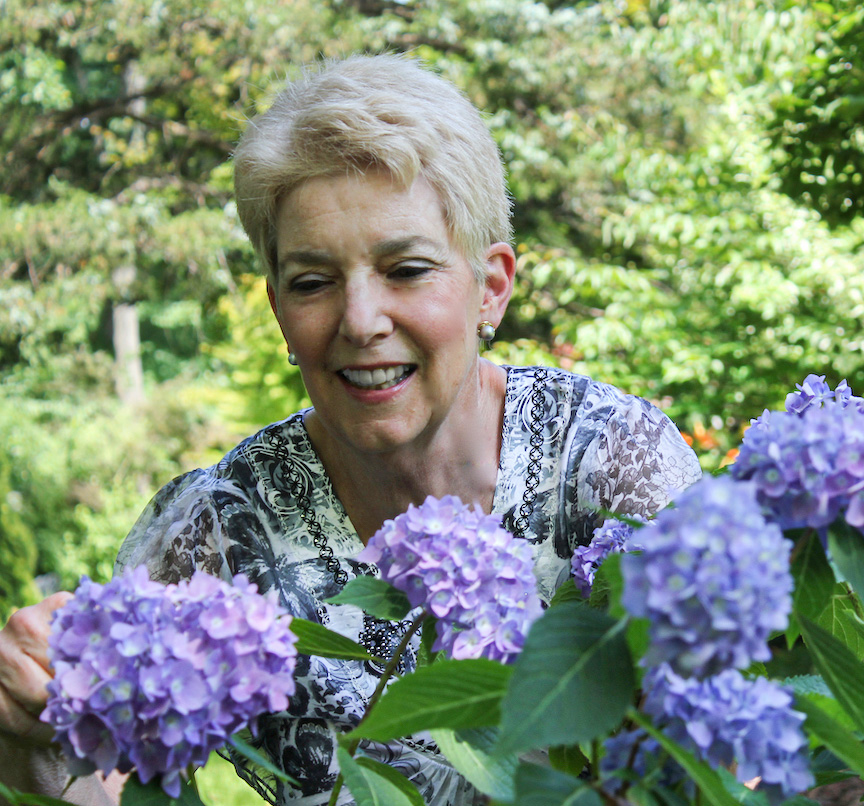
How to Grow Hydrangea Macrophylla
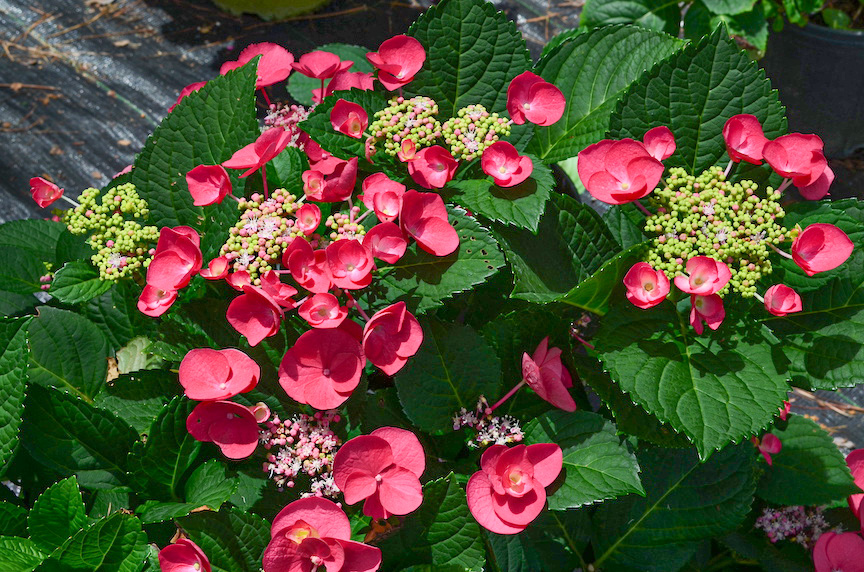
This is the most difficult of the hydrangeas but also coveted for their flowers. Known as the mophead hydrangea it’s probably the most popular type of hydrangea grown today.
“If you’re going to go for the really hard ones, which is what we want, the elusive blue flower, that’s the macrophylla which is the most challenging of all of them,” Ballato says. “Because they are the most sensitive to temperature and weather issues.”
This type of hydrangea forms buds during the summer and a lot can happen to those buds before they bloom during the next season. That could mean weather, deer or other damage before flowering.
Ballato grows anywhere from 50 to 70 plants, trialing them to see what they require to flower and to learn other cultural information about each type.
For macrophylla, providing some protection during the winter, using plants with persistent winter foliage will help these plants through the cold months.
“I’ll use needle conifers,” she says of plantings near the hydrangeas. Other evergreens like rhododendron, azaleas would work too, but even oaks, beeches that hang onto their leaves or twiggy spirea will act as a windbreak when sited correctly.
Some gardeners will surround the plant with wooden stakes and attach burlap to the stakes, leaving the top open as a way to keep the buds happy.
A season with an early spring warming trend, followed by bitter cold after the buds swell, can freeze them out, meaning no flowers for the year.
The second piece of the puzzle is having plants in the right place with regards to the amount of sun they receive during the growing season.
“Ideally half a day, morning sun and afternoon shade,” she recommends.
Ballato has experimented though, with different plants that have thrived out in afternoon sun.
“As long as they have water, spruces to protect them from the wind and weather, and of course, as long as they are well mulched too,” she explains.
It’s a tricky balance, she says, when deciding how much water they need.
“You can only figure that out by observing the plant,” says Ballato. Too much and the plant might succumb to root rot: not enough and flowers will fade quickly if the plant blooms at all.
“It’s really a diva this plant,” she says of H. macrophylla. “By the time you have a plant in the ground for the third year and it hasn’t flowered, you should be checking all those cultural conditions or you should move it to another place.”
Ballato is not shy about transplanting hydrangeas. She’ll look for the right conditions for each variety. Often times it’s the difference between a few flowers and a plant covered in blooms.
There are other types of hydrangeas, which are more reliable bloomers, especially for northern gardeners in zone five and six (like Western Pa.).
Many new types of macrophyllas are rebloomers, setting buds in summer, but again the next too.
When asked about ‘Nikko Blue,’ a variety which blooms about once every three years in my garden and was a star in its day, Ballato offers up sage advice for gardeners.
“If you have a ‘Nikko Blue,’ which is the old traditional one, it’s a crapshoot,” she says of its flowering regularity. “I suggest if they can bear to part with it, get rid of it and replace it with one of the more dependable rebloomers.”
How to Grow Hydrangea Serrata
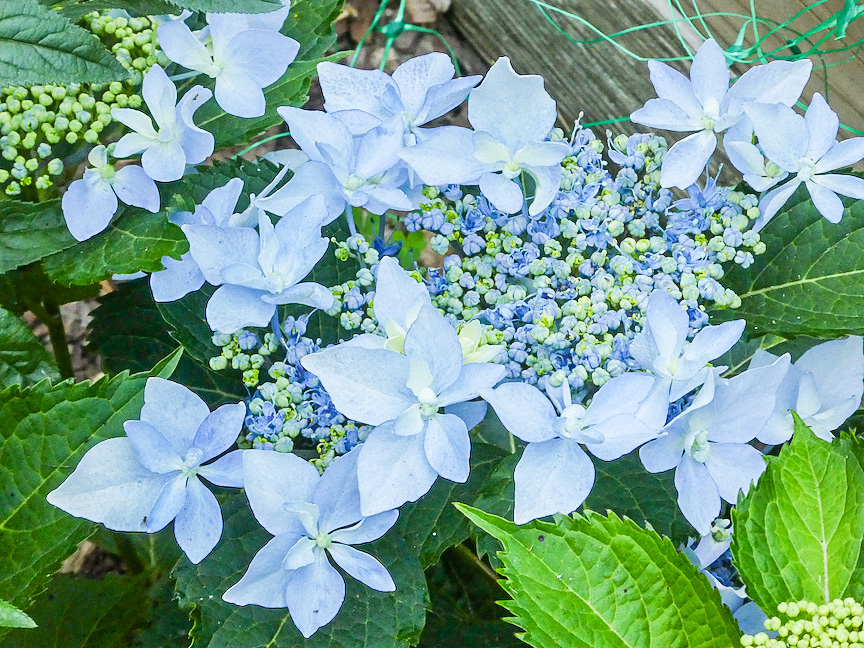
H. serrata is also known as the mountain hydrangea and it’s high on Ballato’s list of varieties.
“They are wonderful, and all the new serratas are rebloomers,” she says. “They are much more resistant to winter temperatures. Their genetics are better.”
For the most part, they all come from the mountains of Japan and have a serrated edge to the foliage, hence the name.
‘Cherry Explosion’ is a favorite.
“It’s a lace cap that’s red, and it’s absolutely phenomenal,” she says. “It’s so dependable. “‘Blue Enchantress’ is an absolute stunner; it has never failed me in the four years that I’ve had it.”
The serrata varieties are being used by breeders working with macrophylla varieties to make them more reliable bloomers.
‘Can Do’ from Proven Winners ColorChoice Shrubs has started blooming the first year in Ballato’s garden, usually, it takes two seasons for a plant to bloom for her.
There are a few different cultivars of ‘Tough Stuff’ she loves too. ‘Ah-Ha’ has a double flower that resembles a lotus, she says. Not only is it beautiful, but the flower measured 10 inches across. Some of the plants have hundreds of blossoms on them.
How to Grow Hydrangea Paniculata
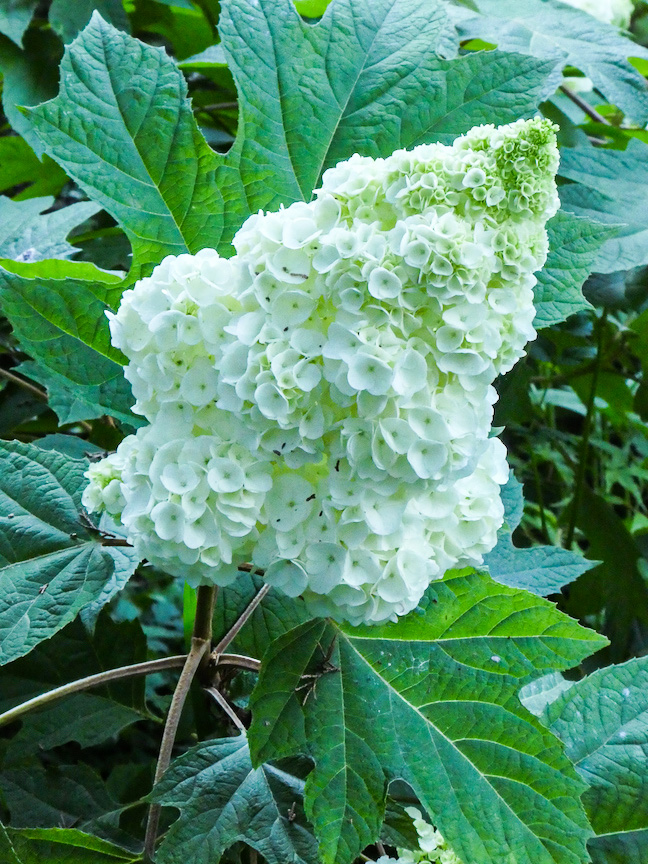
but can’t be allowed to dry out.
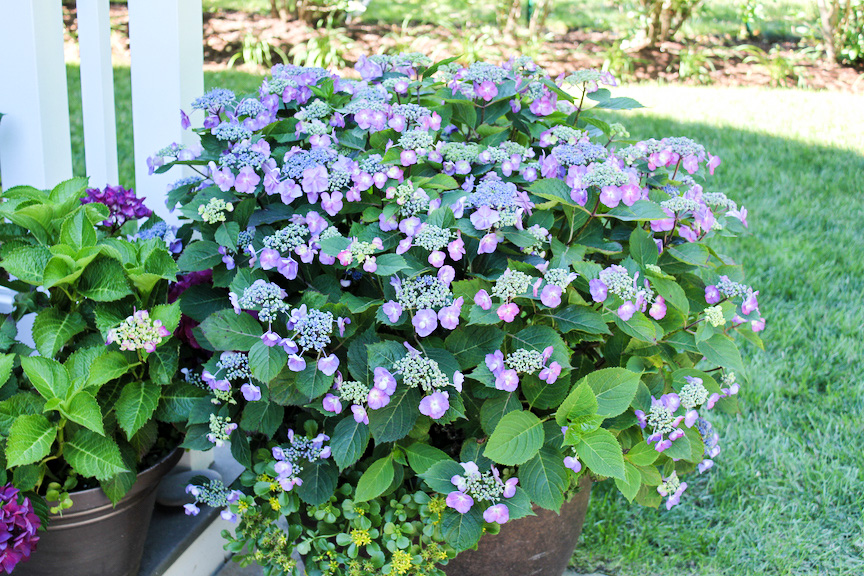
"That’s the one that loves the sun, to a degree,” Ballato says. “If it gets too much sun and not enough moisture the flowers are going to go brown very quickly.”
‘Limelight’ is one of the most popular, but newer varieties are being released each season.
“I’ve had really good success right now with ‘Firelight,’” she adds. “It stands straight and tall. I don’t have to prune it a special way, and the color is consistent.”
‘White Wedding’ is loaded with flowers, it could eventually reach four to six feet tall.
Paniculatas are reliable bloomers, she calls them foolproof. “It flowers on the current season’s growth, you don’t have to worry about the winter,” she adds.
Hydrangea Arborescens
It’s also referred to and the smooth or wild hydrangea and gets the foolproof moniker from Ballato too. They also bloom on the current year’s growth.
‘White Dome’ is a great pollinator plant and tough as nails.
“I talk about that one a lot,” Ballato remarks. “I think it’s a real winner. It stands up to the snow. The stems are straight, tall and strong. I leave mine up in the winter.”
‘Haas Halo’ has white flowers with a slightly blue tint. The ‘Invicibelle’ and ‘Incrediball’ series offer pink and white flowers respectively and are rebloomers.
“I didn’t spray one and the deer chomped down on it” she says. “Six weeks later there were new flowers on it.”
Hydrangea Quercifolia
Often called the oakleaf hydrangea due to its large oak-like foliage, it’s another reliable bloomer, but does not like wet feet. The blooms are conical, many varieties start white and fade to deep pink or red.
The plant has dark red fall color and an exfoliating bark for winter interest, but Ballato is more interested in the beautiful blooms than the bark.
‘Ruby Slippers, ‘Gatsby Moon’ and ‘Gatsby Star’ are a few she recommends.
Hydrangea Petiolaris
“Climbing hydrangeas are also fabulous plants,” she says. “They are bulletproof. The flowers are beautiful lace caps so the bees are all over it. It’s extremely fragrant, likes shade and is not fussy about soil.”
Even though they are best grown on support, the plant will ramble to make an interesting groundcover too.
The past two winters have been mild in the northeast, providing a perfect opportunity for flowering hydrangeas.
“If your plant is not blooming this year, you should be looking at the cultural conditions. The stars are all in alignment this year, relative to the external issues of weather,” says Ballato.
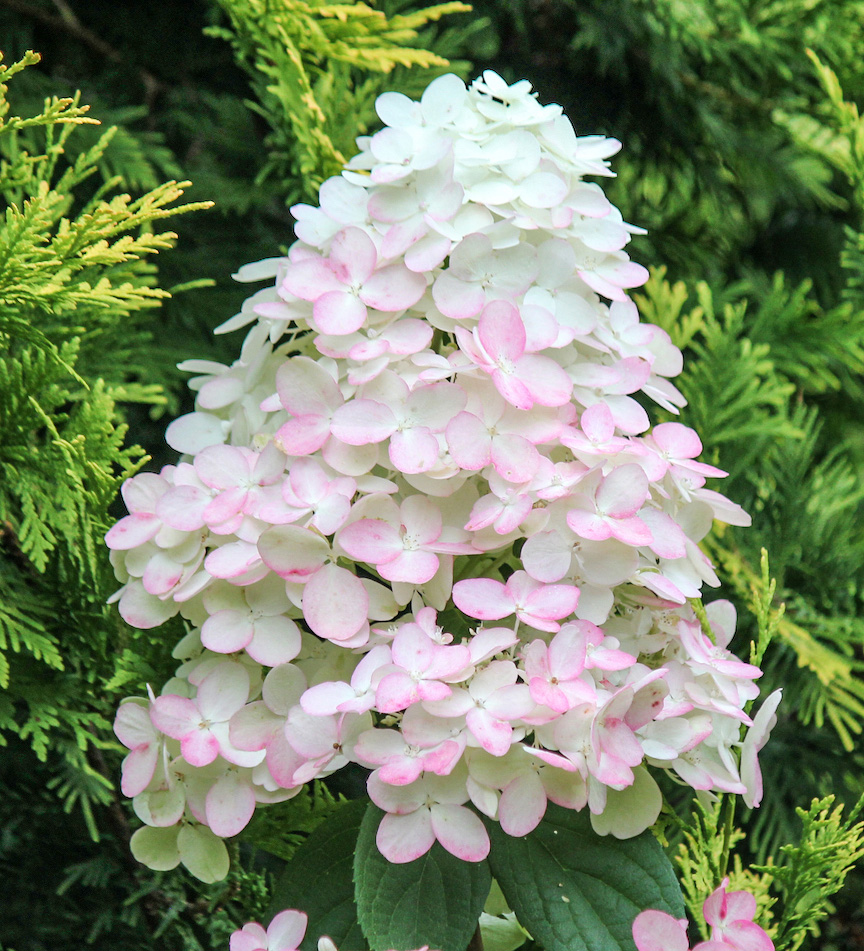
She has a few more tips for hydrangea growers:
- Always see the plant flower before buying. This assures that the plant can actually bloom and that it’s not mislabeled as a different cultivar.
- Ballato recommends northern grown plants need five to six hours of sun, preferably in the morning.
- Fertilize in the spring with something like Rosetone or another granular fertilizer formulated for shrubs. Do not fertilize after August first.
- Test the planting hole by filling it with water. If it drains immediately, the soil isn’t holding enough moisture. If it takes forever to drain, the plant won’t be happy either. Ballato recommends finding the right spot and using the native soil as backfill. Maybe adding a little compost when needed.
Hydrangea macrophylla might be the most popular type in the garden, but Ballato urges gardeners to look further. “If you can get off a blue flower, you can do very well with all the others.”
When asked to name her favorite, she answers, “The favorite is the one I’m looking at right now, it changes in five minutes.”
Her final piece of advice for hydrangea growers is a paraphrased quote from organizing guru Marie Kando.
“If you’re looking at your plant and it’s not giving you joy, get rid of it,” she says. “There are so many others that are so much better.”
Lorraine Ballato’s website is filled with great hydrangea information, including a seasonal blog along with a way to purchase, “Success With Hydrangeas.”


